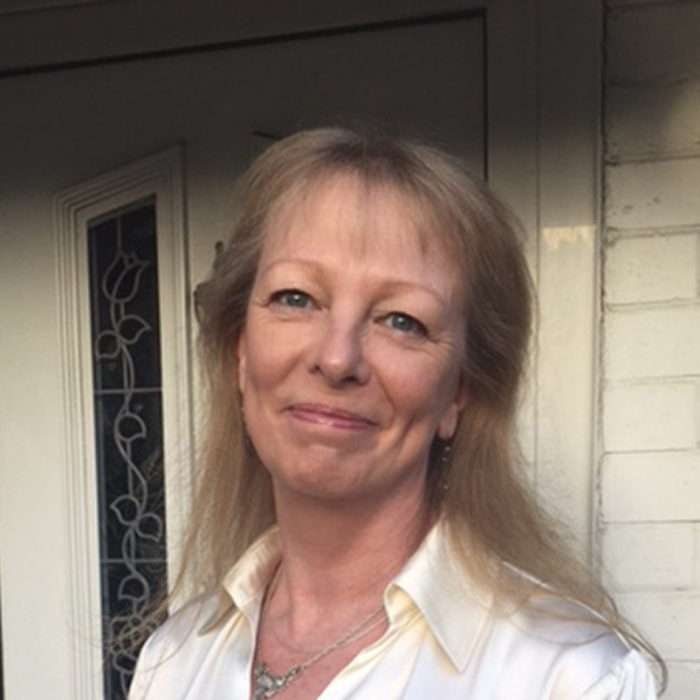30 years ago Earth launched a telescope into space that has gone on to change the way we look at the Universe around us: the Hubble Space Telescope.
It’s appropriate that the telescope should be named after Edwin Hubble – the scientist who showed us our Universe is expanding – for no other mission has enriched or revolutionised our knowledge of the cosmos, nor captured the imagination of the world quite like Hubble.
Read more about the Hubble Space Telescope:
- 21 incredible Hubble images of the past decade:
- An interview with Hubble astronaut Kathryn Sullivan
- Hubble spots the farthest galaxy ever seen
The project was decades in the making. The idea of launching a telescope into space, bypassing the distortion caused by Earth’s atmosphere, was first suggested by Herman Obert, a German rocket scientist in 1923.
In 1946, American astronomer Lyman Spitzer began lobbying for the project,but it was not until 1969 that NASA officially took up the proposal and published a report on the scientific advantages of what was then called The Large Space Telescope.

The first working group was held in 1974 and $36m of funding was finally approved by Congress in 1978.The European Space Agency then came on board, contributing extra funding and expertise.The path to the launchpad was far from smooth, however.
The telescope was meant to be launched onboard a Space Shuttle in 1983, but problems with the mirror meant the project slipped increasingly behind schedule and over budget.
Eventually a launch date of September 1986 looked possible, only for the Challenger disaster in January that year to halt all Shuttle flights.Delayed for another 4 years, the budget increased to an eye-watering $4.7bn.
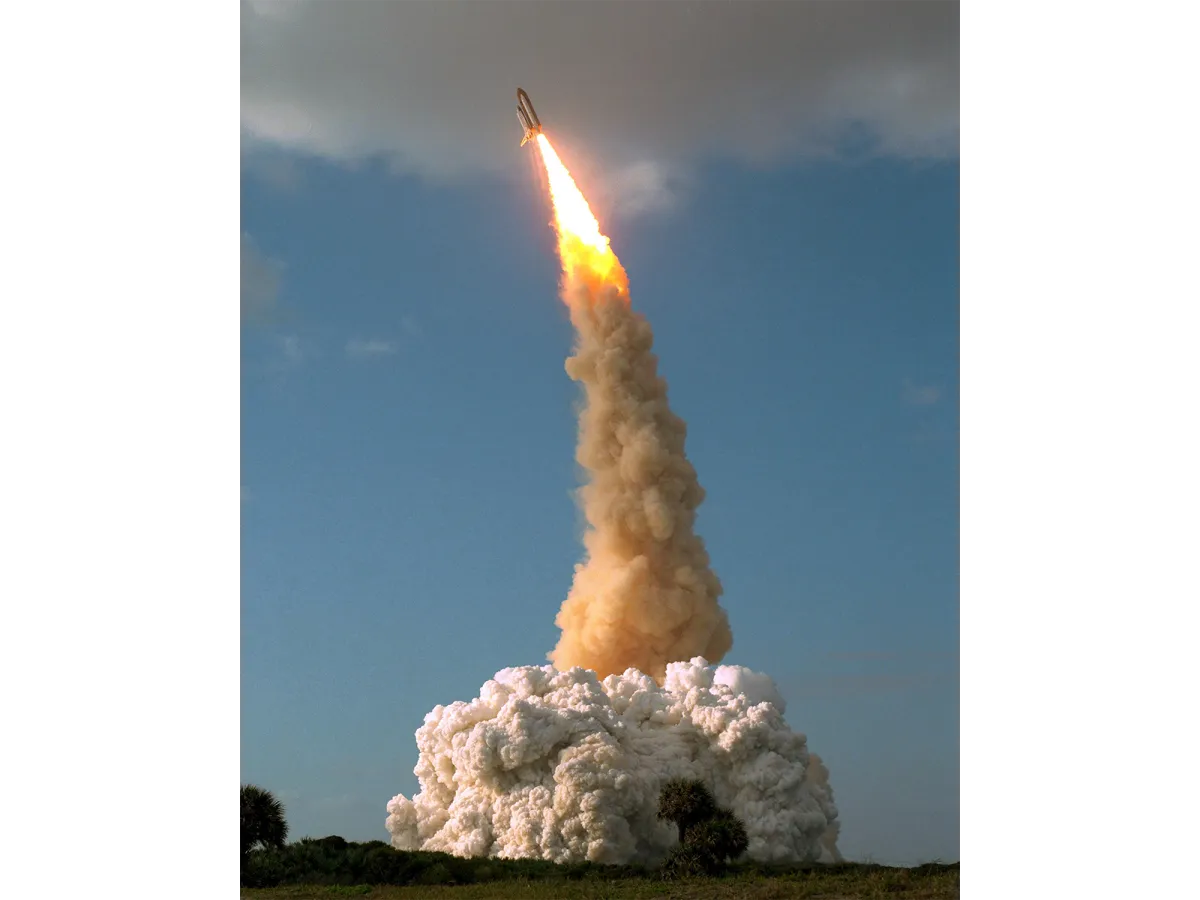
Getting off the ground
Elsewhere, budget constraints meant the original plan of having a 3m mirror had to be reduced to 2.4m.
This would be capable of accommodating five scientific instruments at once. At launch these were the Wide Field and Planetary Camera (WFPC), Goddard High Resolution Spectrograph (GHRS), High Speed Photometer (HSP), Faint Object Camera (FOC) and Faint Object Spectrograph (FOS).
Space Shuttle flights resumed in 1988 and finally on 24 April 1990, Space Shuttle Discovery mission STS-31 lifted off from the Kennedy Space Center and the following day Hubble Space Telescope launched into a geocentric orbit about 550km above Earth, where, travelling at a speed of 28,00km/h, it orbited once every 97 minutes.
As soon as the first images were received it was obvious there was a serious problem with the optics.Instead of sharp pin point images, stars were surrounded by fuzzy halos. This was a devastating blow.

Though the telescope could still carry out some observations of bright objects, any faint observations were impossible.By analysing the images, the Hubble team soon discovered that a microscopic error on the outer edge of the primary mirror meant the mirror was polished too flat.
On any other telescope, this would have been terminal, but Hubble had been designed to be maintained and upgraded in space using the Space Shuttle.
While this couldn’t replace the primary mirror, a second-generation camera for Hubble, the Wide Field and Planetary Camera 2 (WFPC2) was already in development and, with the aid of some corrective optics, NASA hoped to compensate for the flaw in the mirror.
The first servicing mission by Space Shuttle Endeavour launched in December 1993.As well as installing the new optics, the team replaced the solar arrays, four gyroscopes, two magnetometers and other electrical components as well as upgrading the onboard computers to keep the telescope running as long as possible.
Hubble under threat
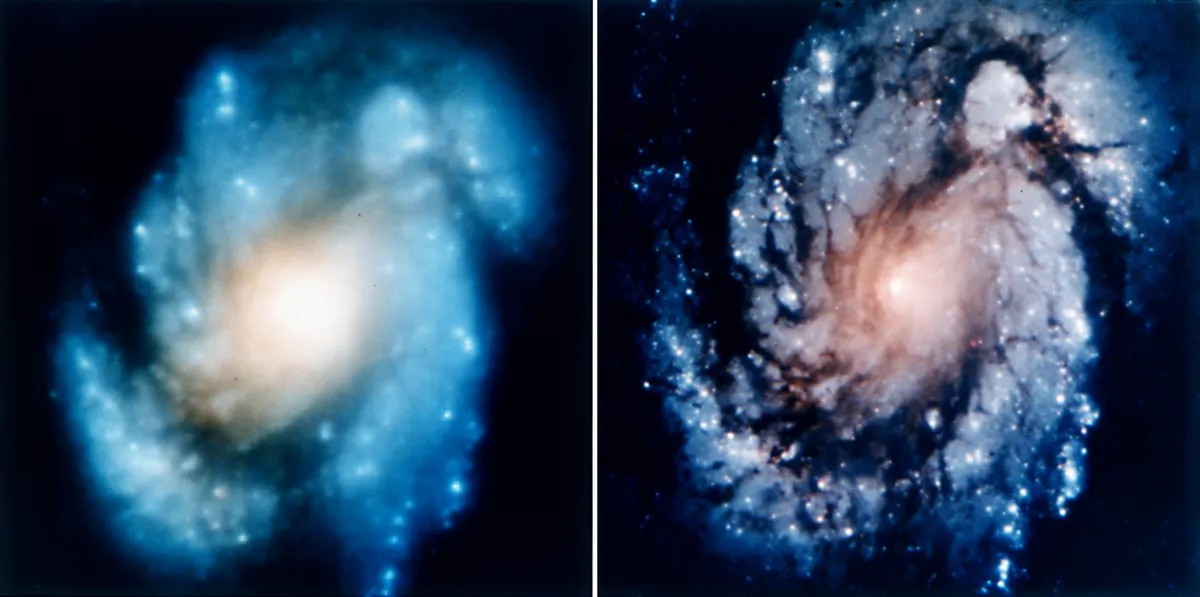
By January 1994 the first pin-sharp images to be received showed that the ambitious and perfectly executed mission had worked. NASA had snatched victory from the jaws of defeat.
Subsequent service missions have been carried out periodically during Hubble’s lifetime.However, in 2003, all services were thrown into doubt when the Space Shuttle Columbia broke up during re-entry.
NASA decreed that all future Shuttle missions must have the capability to dock with the International Space Station (ISS) as a safety precaution.As Hubble was on a different orbit to the ISS, this would not be possible.
There was an outcry from both astronomers and the public and a sustained campaign was mounted to rescue Hubble.
Finally in 2006, NASA gave the go ahead for a final servicing mission and not a moment too soon.In 2008, the main data-handling unit on board the telescope failed, leading to a month-long black out of all scientific data.
In May 2009, Atlantis flew the last service mission. It replaced the primary data-handling unit repaired two other instruments.Wide Field Camera 3 (WFC3) and Cosmic Origins Spectrograph (COS) were installed and a Soft Capture Mechanism (SCM) was also put in.
This would allow a future mission, either crewed or robotic, to perform a safe controlled deorbit when Hubble finally reached the end of its mission.
Pioneering science
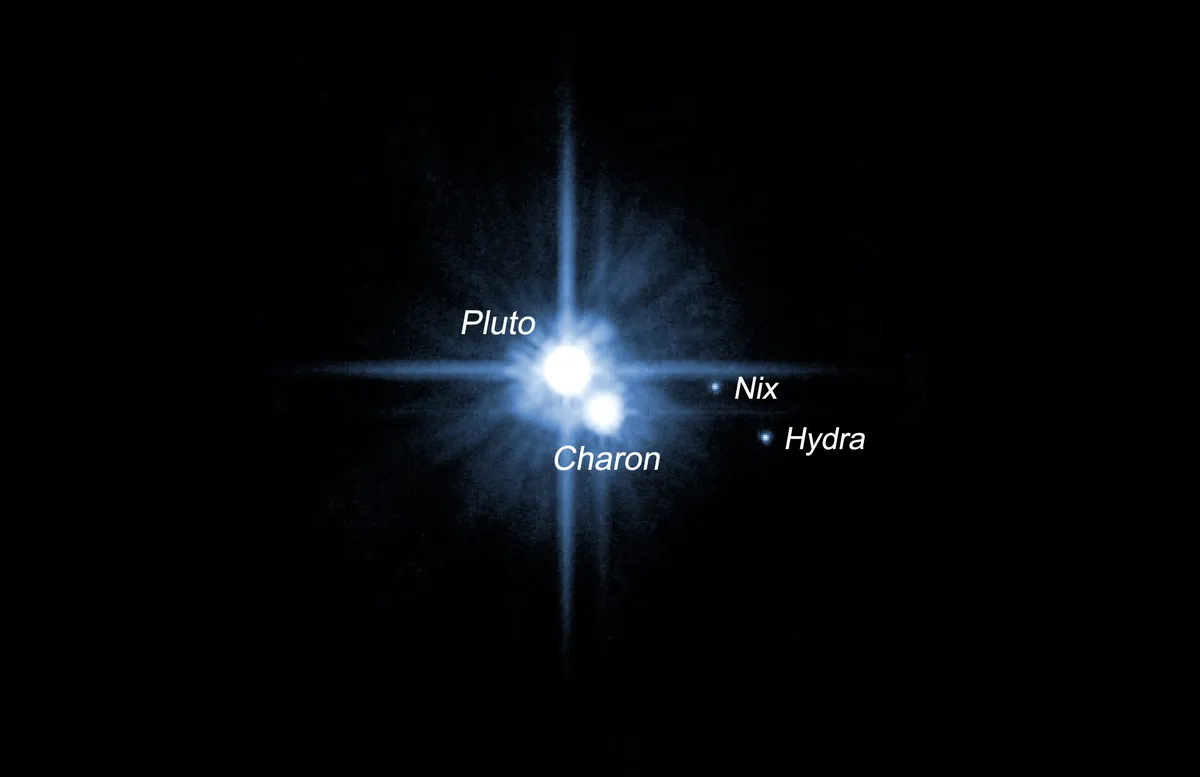
Thoughout the last three decades, Hubble has played a role in investigating almost every area of astronomy.The telescope has found new star-forming regions and informed our knowledge of planetary formation.
It has looked at galaxies that formed when our Universe was just 3% of its current age and informed us that a black hole lies at the heart of most galaxies.
It has helped to determine the size and mass of our Milky Way Galaxy, created a 3D map of dark matter, helped to characterise dark energy, pinned down the rate that our Universe is expanding and measured the age of the Universe to 13.7 billion years.
In 2016 Hubble data revealed the oldest and farthest known galaxy, GN-z11, which is 32 billion lightyears away, meaning we see it as it was 400 million years after the Big Bang.
In 2001 Hubble was able to measure the elements present in the atmosphere of the exoplanet HD 209458b and in 2008 took the first ever visual image of an exoplanet (Formalhaut b).
It was the first telescope to determine the true colour of an exoplanet and created the most detailed weather map of one.It found evidence of two asteroids colliding for the first time and observed the disintegration of another.
Hubble discovered Pluto’s moons Styx, Hydra and Nix and in 2015 located five new Kuiper belt objects when it was used to find a target for the New Horizons mission.

In 1994 it witnessed the impact of comet Shoemaker-Levy 9 on Jupiter. It has found jets of water vapour erupting on the surface of Jupiter’s moon Europa and, by measuring the aurorae on Ganymede, determined there must be a 100km-deep subsurface ocean beneath the 150km ice crust.
Hubble even caught the first predicted appearance of a supernova in a distant galaxy cluster, and earlier this year Hubble discovered that the Sombrero Galaxy, M104, had undergone mergers with other galaxies in the past.And these are just a few of the discoveries Hubble has made out of a catalogue of hundreds.
In its 30 years, Hubble has carried out several major observation campaigns, the largest being the Cosmic Assembly Near-infrared Deep Extragalactic Legacy Survey (CANDELS).
This used Hubble to take deep images of over 250,000 galaxies, exploring the evolution of the early Universe from less than a billion years after the Big Bang.The telescope looked at five different areas of the sky, studying them in the many wavelengths available to it and other survey telescopes.
In 2006, the Cosmic Evolution Survey (COSMOS) used Hubble, alongside many other major telescopes, to study a two square degree patch of sky, 17 times larger than any of the CANDELS regions.Over two million galaxies were detected, covering 90% of the age of the Universe.
Another project, the Hubble Deep Fields Initiative, used gravitational lensing to study high-redshift galaxies that are around 10 to 50 times fainter than any of the ones previously studied.
One particular set of images, Hubble’s Deep Field Observations, includes perhaps some of the most astonishing images ever produced.
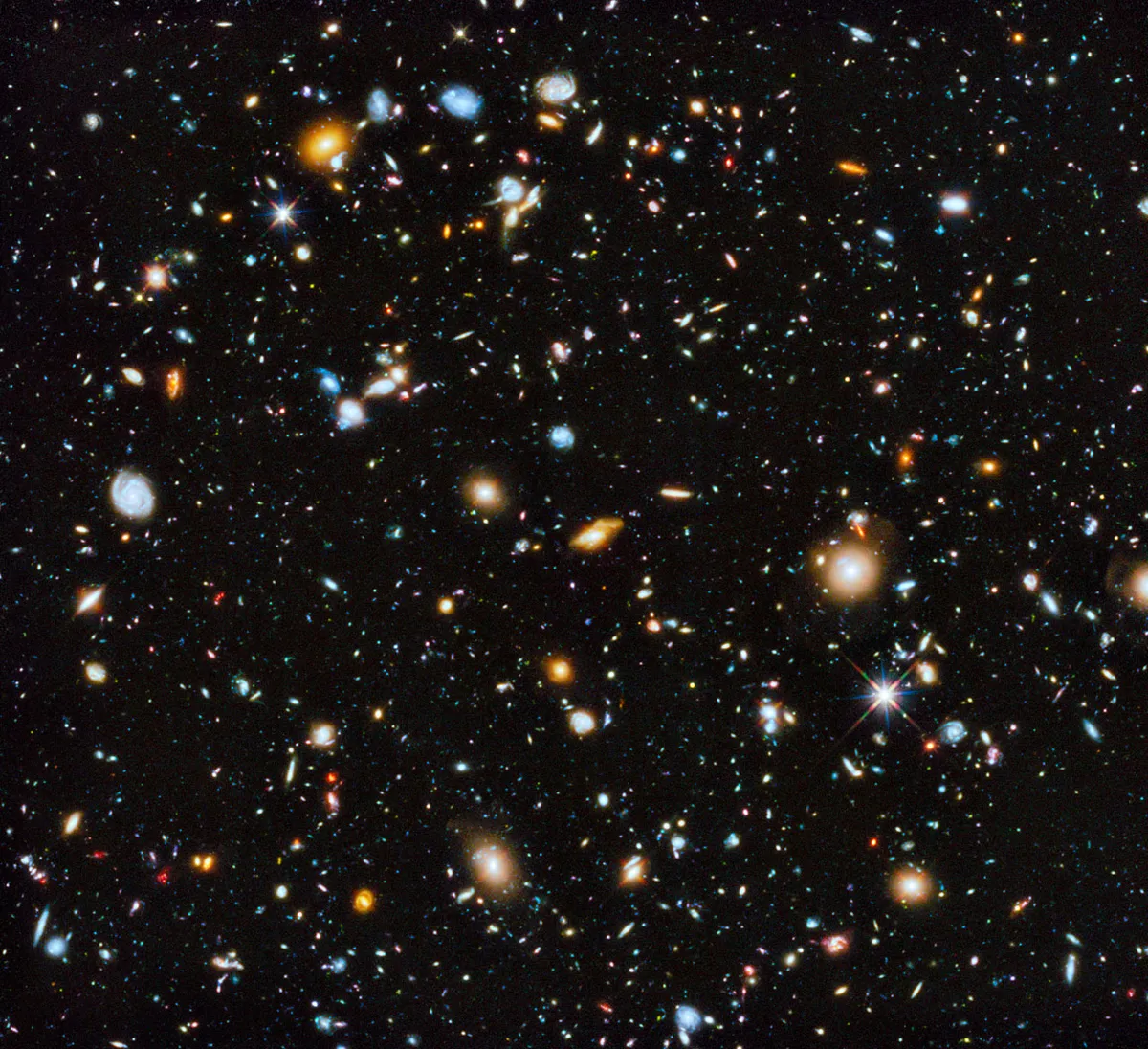
In December 1995, Hubble took 342 exposures over 10 consecutive days of the same tiny patch of sky in the constellation of Ursa Major – an area covering roughly one 24–millionth of the entire sky.In 1998 a similar area of the Southern Hemisphere in the constellation of Tucana was imaged in the Hubble Deep Field South.
In 2004 the Hubble Ultra-Deep Field covered a small area in the constellation of Fornax containing 10,000 galaxies.It was the most sensitive astronomical image in visible wavelengths ever made until 2012 when the Hubble eXtreme Deep Field was released – covering just a portion of the Ultra-Deep Field.
With so much information to keep track of, the Hubble Heritage Project was founded in 1998 and the following year ESA launched its Hubble Information Centre.
These select, process and release images and news bulletins and it is these images that have inspired the public and been hailed for their “outstanding contributions to the public understanding and appreciation of astronomy”.
Many of Hubble’s images have become cultural icons, appearing not just in science books, but on everything from album covers to coffee mugs.No other mission has opened our eyes to the variety, complexity and downright beauty of space.
Thirty years on, Hubble is still working productively and estimated to be operational well into 2030 or 2040.Over the three decades of its life Hubble has taken over a million observations and the data it has generated has been published in more than 16,000 peer-reviewed scientific papers, which are referenced on average at a rate of 150 times a day.
In 2017 the US government announced it was considering further servicing missions to extend the life of this iconic telescope that has expanded our view of the Universe.
Who was Edwin Hubble?
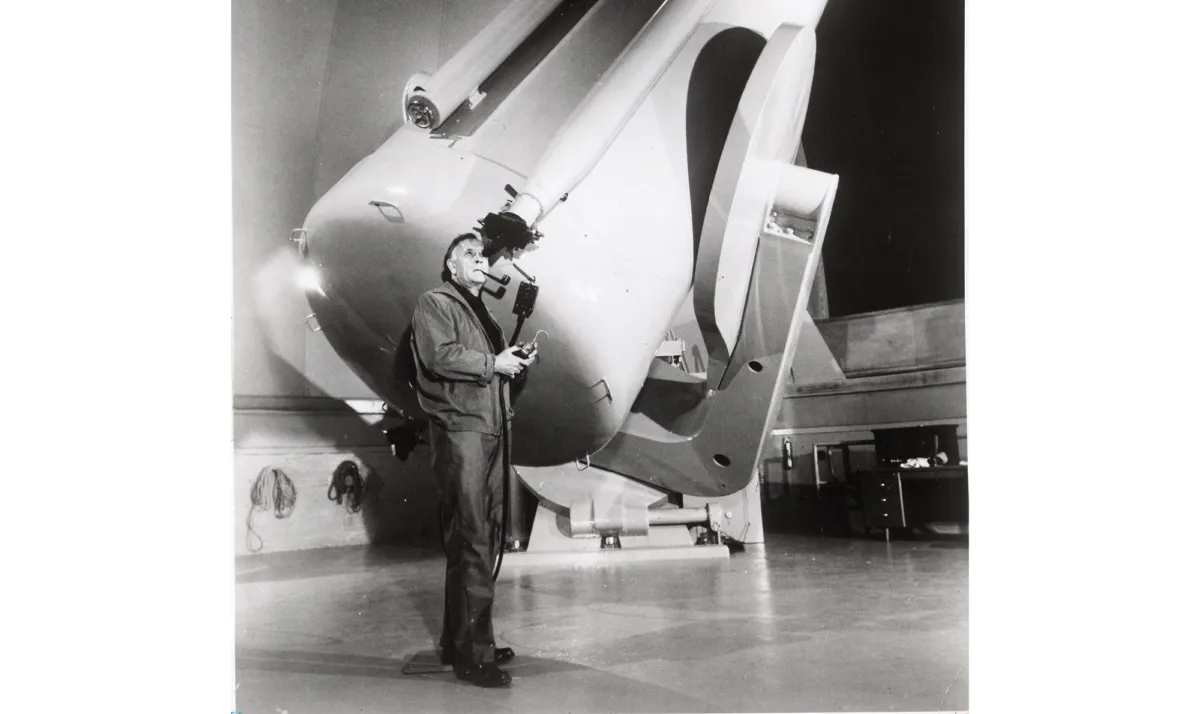
Edwin Powell Hubble was born in Missouri in 1889. To please his father he studied law, but after his father died he returned to university to gain a PhD in astronomy.After serving in World War One, he took up a post at the Mount Wilson Observatory.
At this time it was widely believed that our Milky Way Galaxy was the entirety of the Universe.By studying Cepheid variable stars in faint ‘nebulae’, Hubble proved these were too distant to be part of our Galaxy, instead being galaxies in their own right.
In 1929 he observed that the velocity of such galaxies was proportional to their distance from Earth, the first evidence for the expansion of the Universe – although Hubble himself believed his observations pointed to a flat and homogenous Universe and rejected the expansion theory.
One of the Hubble Space Telescope’s primary missions was to build on his work, and accurately measure the distances of Cepheid variable stars and refine the ‘Hubble Constant’ relationship of galaxies’ velocities and their distance from us.
By studying distant supernovae, it provided evidence that instead of decelerating under the influence of gravity, the expansion of the Universe was accelerating, an effect now attributed to dark matter.
Hubble's glasses
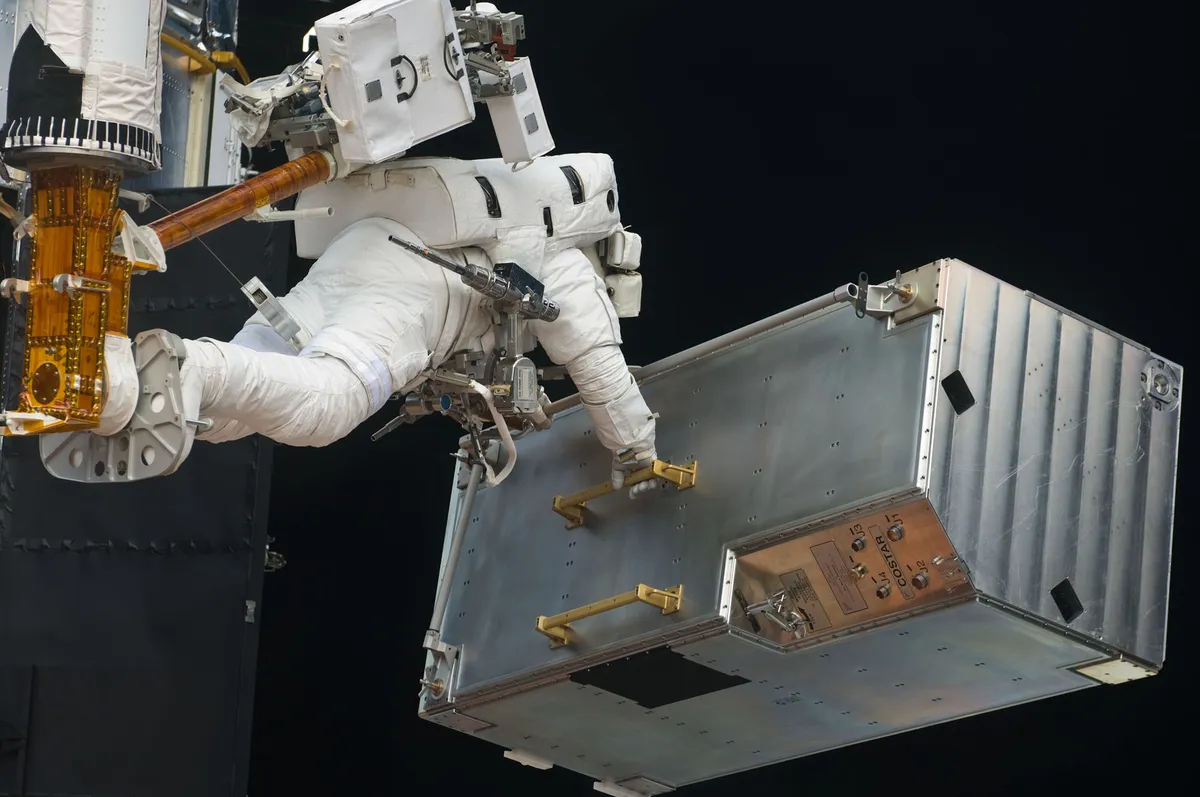
As the first images from Hubble came down to Earth, it was obvious all was not well and it wasn’t performing as it should.After a few weeks the problem was identified – the primary mirror was just 2 microns too shallow, around one 50th the width of a human hair.
Hubble couldn’t reach the sharp focus it was meant to. Rather than collecting 70% of starlight to a focal point, Hubble was only able to collect 10 to 15%.Luckily the upgraded WFPC2 was being built and engineers could adjust the optics to compensate for the flaw.
This didn’t solve the problem for all the other instruments onboard, however.
A set of smaller corrective mirrors, named the Corrective Optics Space Telescope Axial Replacement (COSTAR) were also developed to focus the images for the other scientific instruments.
COSTAR consisted of five pairs of small mirrors on deployable arms, with 12 motors and over 5,000 individual parts, that could be positioned to intercept and refocus the light from the primary mirror into the 2 remaining spectrographs and FOC.
It launched on Space Shuttle Endeavour in December 1993, on the most complex Shuttle mission ever performed.It took the 7 astronauts 10 days and 5 spacewalks to install the new equipment.The mission went off without a hitch and when the first pin sharp images came through, they knew it had been a complete success.
Hubble was back in business.
Hubble's servicing missions
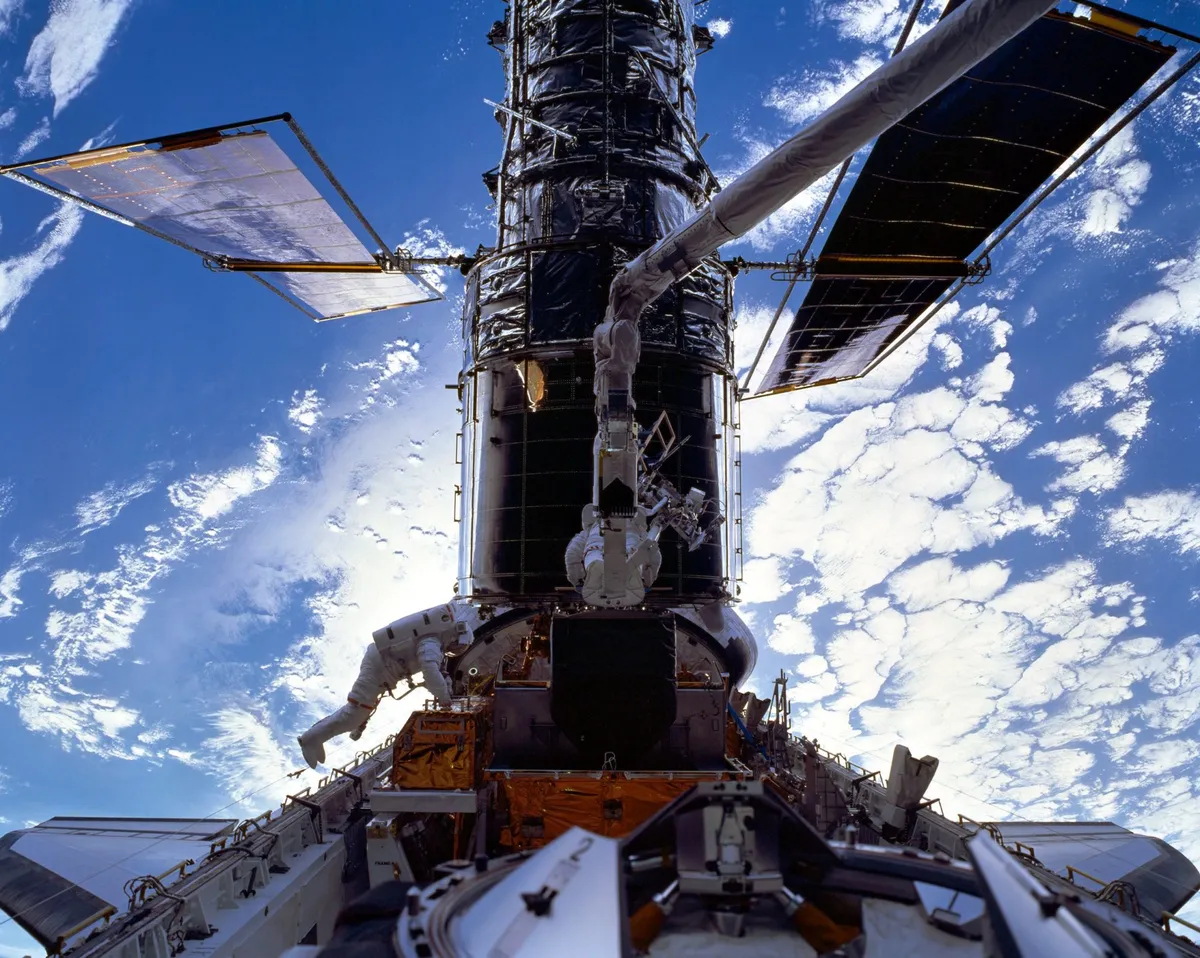
The Hubble Space Telescope was the first spacecraft designed to be maintained, upgraded and repaired by astronauts while still in space.Over the years, it’s had five such servicing missions all staged from the Space Shuttle.
Before each, astronauts trained rigorously, simulating the spacewalks required and testing the hardware to be installed.During these missions the Space Telescope Operations Control Centre (STOCC) placed Hubble into hibernation and closed the cover to protect its optical equipment.
They then manoeuvred the telescope into position where the Shuttle’s robotic arm could grab the telescope and place it in the payload bay.With Hubble anchored in place, astronauts could undertake three to five spacewalks to install new instruments or repair existing ones.
Ground crew would then test the new additions before preparing Hubble for release.The Shuttle would often boost the telescope into a higher orbit to prolong its life, as atmospheric drag is slowly bringing the telescope closer to crashing.
The robotic arm would then release Hubble, and STOCC would reopen the aperture door and check all was working as it should.It usually took a few months of further testing before Hubble was back to full science operations after a servicing mission.
The people's telescope
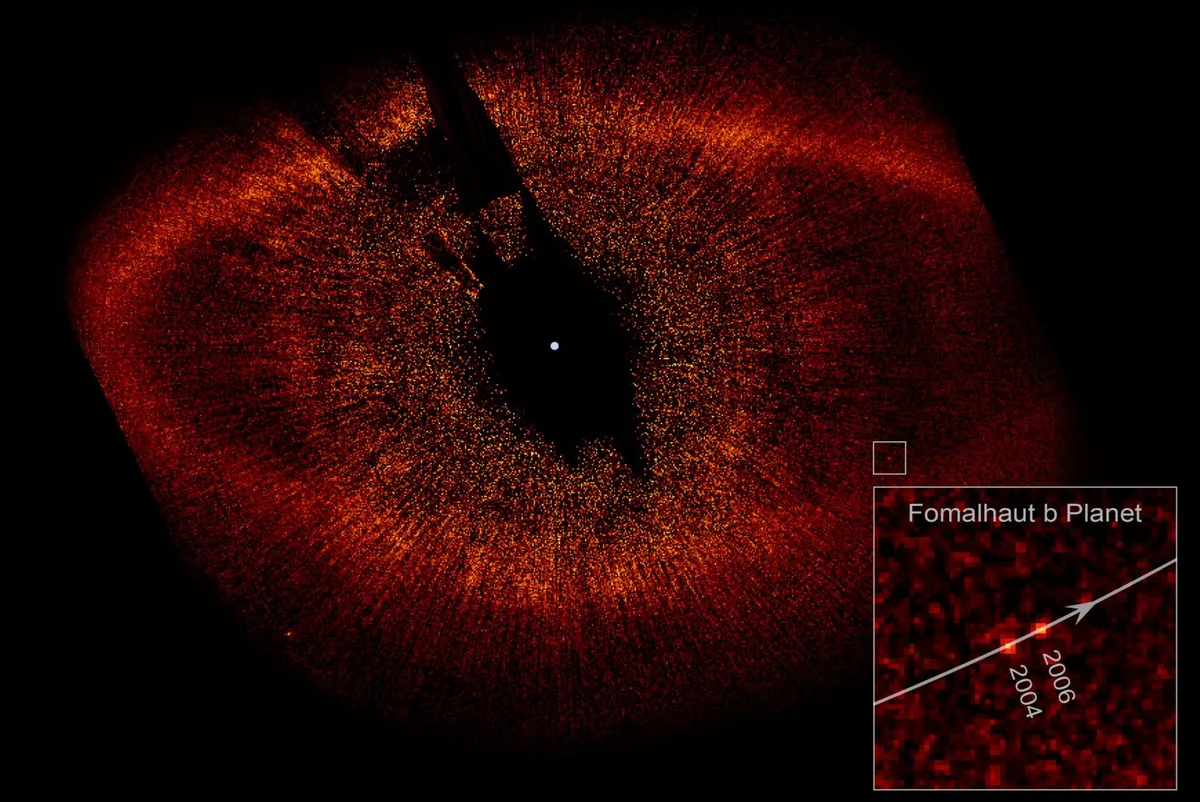
Everyone loves a comeback story and Hubble’s is one of the best. When it launched it was already over budget and behind schedule.
Then the first flawed images came out and both Hubble and NASA became a laughing stock.They were lampooned in the media and seen as an expensive waste of taxpayer’s money.
However, the repair mission was so audacious and the final images so breathtaking that the public ultimately fell in love with the space telescope.
The number and importance of news stories about Hubble’s images and discoveries have outstripped all other missions – including Apollo.While Hubble’s scientific discoveries are many and groundbreaking, you don’t have to be a scientist to appreciate the sheer beauty of the images it has returned.
Hubble’s images have been used in TV shows from Star Trek Voyager to the Big Bang Theory and have changed the way space is portrayed in movies – from empty blackness to being filled with vivid colours (see our guide to the best space movies).
Iconic images, like the Pillars of Creation (right) and the Ultra Deep Field, along with incredible views of planets and nebulae, galaxies and star clusters, moons and dying stars, all seen in unprecedented detail, have taken astronomy into the mainstream and brought the wonders of the cosmos to everyone.
This article originally appeared in the May 2020 issue of BBC Sky at Night Magazine.
